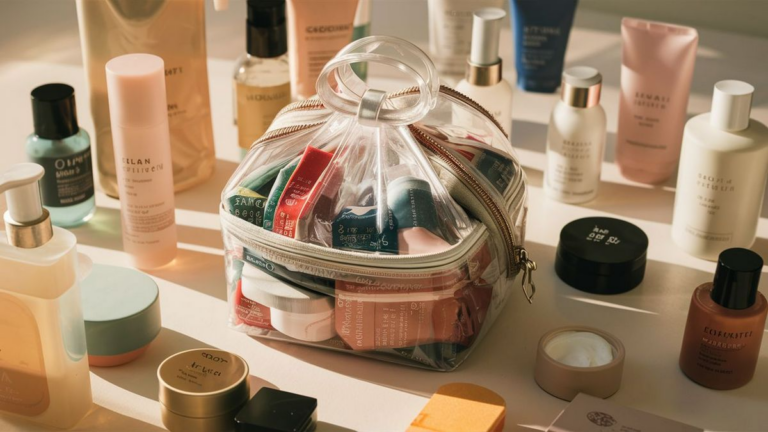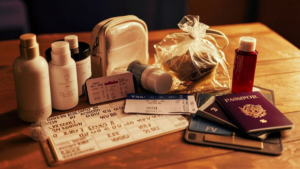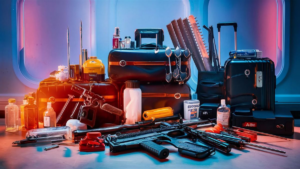When preparing for air travel, it’s crucial to understand the regulations surrounding liquids allowed in carry-on luggage. This guide aims to provide comprehensive information on the quantity of liquids permitted on a plane, ensuring a smooth and hassle-free travel experience.
Understanding TSA Regulations
The Transportation Security Administration (TSA) oversees security measures at airports across the United States. Their guidelines dictate the amount of liquid passengers can bring in their carry-on bags to maintain safety standards during flights.
Liquid Restrictions
TSA’s regulations stipulate that passengers can carry liquids, gels, and aerosols in containers of 3.4 ounces (100 milliliters) or less. These containers must fit comfortably in a single quart-sized, clear, plastic, zip-top bag. Each traveler is allowed one such bag, making it easier for security personnel to inspect the contents efficiently.
Exceptions to the Rule
While the 3.4-ounce limit is the standard, certain exceptions exist for specific items:
- Medication: Prescription and over-the-counter medications are exempt from the 3.4-ounce rule. However, passengers may be required to declare them to security personnel for inspection.
- Baby Formula and Food: Parents traveling with infants are permitted to carry necessary liquids, such as baby formula and food, exceeding the 3.4-ounce limit. It’s advisable to inform security officers about these items during the screening process.
- Special Dietary Needs: Passengers with dietary restrictions or medical conditions requiring specific liquids may bring them aboard. It’s advisable to carry documentation or a doctor’s note to justify these exceptions.
Security Screening Process
During the security screening process, passengers are required to remove their quart-sized bag containing liquids from their carry-on luggage and place it in a separate bin for X-ray inspection. This ensures that security personnel can easily identify any prohibited items or potential threats.
Tips for Smooth Screening
To expedite the security screening process and avoid delays, travelers can follow these tips:
- Organize Liquids: Pack liquids in the designated quart-sized bag before arriving at the airport to streamline the screening process.
- Accessible Placement: Place the quart-sized bag of liquids in an easily accessible location within your carry-on luggage to facilitate quick retrieval during screening.
- Cooperate with Security: Follow instructions from TSA officers and be prepared to remove your liquids bag for inspection if requested.
Understanding the regulations regarding liquids on planes is essential for all travelers to ensure compliance with TSA guidelines and a smooth airport experience. By adhering to these rules and exceptions, passengers can navigate security screenings with ease and minimize any potential disruptions to their journey.
Frequently Asked Questions
Here are some common queries related to carrying liquids on planes:
- Can I Bring Perfume or Cologne? – Perfumes and colognes fall under the category of liquids and must adhere to the TSA’s regulations. They should be in containers of 3.4 ounces (100 milliliters) or less and placed in the quart-sized bag for inspection.
- What About Duty-Free Liquids? – Duty-free liquids purchased at the airport or onboard the aircraft are allowed in carry-on bags, but they must be placed in a security tamper-evident bag along with proof of purchase. However, if you have a connecting flight, be aware that you might need to undergo additional screening at transfer points.
- Are E-cigarettes and Vaping Devices Permitted? – E-cigarettes and vaping devices are subject to TSA regulations. Passengers can bring them in carry-on luggage, but they should be removed during screening and may not be used onboard the aircraft.
| Item | Allowed | Restrictions |
|---|---|---|
| Prescription Medication | Allowed, no limit | Must be declared and may require additional screening |
| Baby Formula and Food | Allowed, exceeding 3.4 ounces | Inform security officers during screening |
| Special Dietary Needs | Allowed, with documentation | Carry documentation or doctor’s note |
Additional Tips for Smooth Travel
Here are some more tips to ensure a hassle-free travel experience:
- Check TSA Guidelines: Before packing, review the latest TSA guidelines to stay updated on any changes or specific requirements.
- Consider Alternatives: For items that may not comply with TSA regulations, consider alternative forms or purchasing them at your destination.
- Plan Ahead: Allow sufficient time for security checks, especially during peak travel periods, to avoid rushing and potential issues.
See also:






